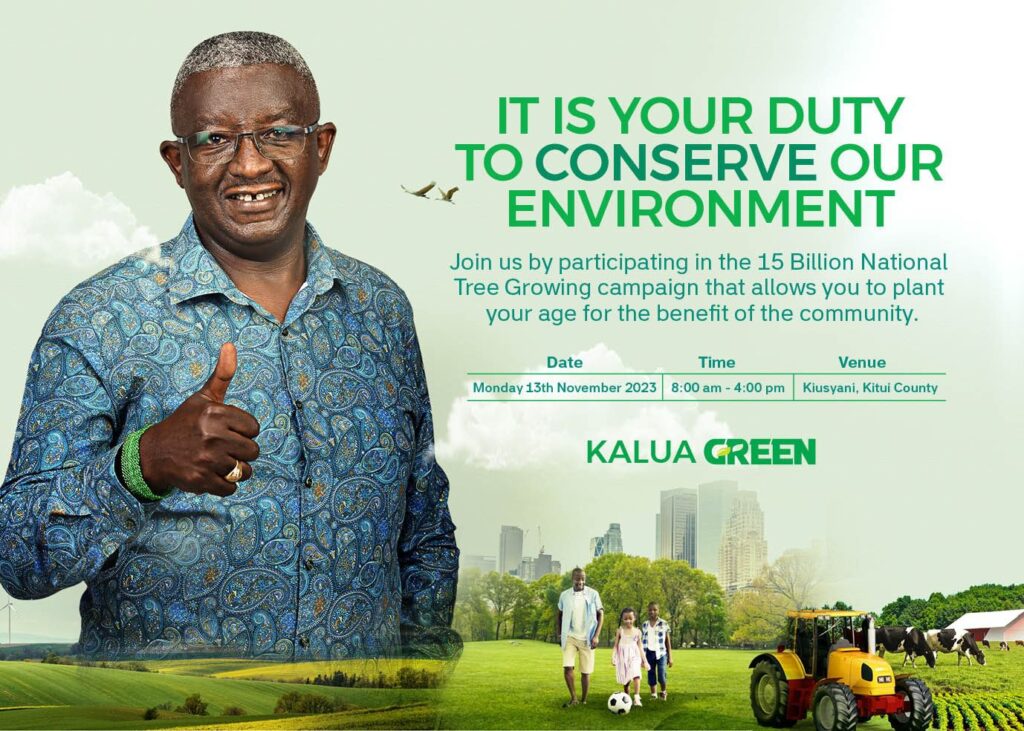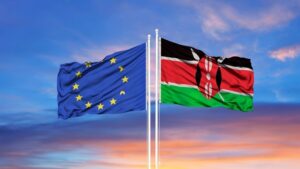In 2000, at the start of the new millennium, I had a moment of revelation. Sitting under a large mango tree in my parent’s compound in Kitui, I gazed up at a particular succulent mango. I deeply contemplated the process from a mango seed to a fruit-bearing tree. As I leaned against the tree’s rugged bark and observed the fruit above, I decided to devote my life to nurturing nature and promoting sustainable livelihoods derived from it.
Tomorrow, Monday, November 13th, marks the inaugural National Tree Growing Day. I hope that, on this occasion, millions of Kenyans will start to develop a deep personal connection to tree growing, experiencing their own transformative moments to become passionate green ambassadors.
Previous national tree growing efforts in public spaces have resulted in a meager survival rate, dropping to as low as ten percent even with various replanting efforts. We must avoid repeating such outcomes. There are four key lessons to be learned from these painful past failures to ensure the successful growth and survival of the well-intended 15 billion additional trees.
Firstly, the seedlings that have survived earlier were mature, deep-rooted ones, often known as ceremonial trees, planted in adequately deep holes. For example, the Kona Baridi site, where President Ruto planted trees in December 2022, shows that the few trees planted by dignitaries are thriving, unlike thousands of younger seedlings that have since perished and been replaced up to four times according to the local community and besides, my recent visit revealed their noticeable struggle. Therefore, we need to allocate sufficient resources, both individually and at corporate and government levels, for a structured tree growing initiatives, recognizing that each seedling contributes vitally to our future by producing oxygen.
Secondly, forest expansion must actively involve local communities who view forests as essential to their livelihood. Unfortunately, afforestation efforts are often led by a select few, creating a disconnect in conservation. Again, in Kona Baridi, as 31-year-old local resident and mother of three Naisenya pointed out, community engagement is minimal. Despite the construction of new facilities for Kenya Forest Service (KFS) rangers and a large, unfenced gate locals live in poor conditions and ironically rely on tree replanting jobs for income. So they wish that the trees can die so that they can get another job. Naisenya questions the lack of trust in locals to protect the trees, given their knowledge of the land and its challenges including dealing with moles and animals that affect the seedlings. To improve this situation, the Forest Conservation and Management Act’s Section 48, which supports community participation, should be utilized. The government must increase structured funding to the KFS to facilitate this vital community role in forest management just like Ebieng-Edzua in northeastern Gabon where residents have conserved their 1,256-hectare forest by utilizing non-timber products. Given Gabon’s 90% forest cover, KFS can practically follow this example of empowering communities while engaging positively for common good.
Thirdly, we must fence the length and breadth of all our forests. Period! It will defeat the purpose of afforestation if we leave our forests vulnerable to wanton exploitation. According to UNDP Kenya, fencing is an effective way of conserving ecosystems and also reducing human-wildlife conflicts.
Fourthly, we should strip away extravagance and simplify tree growing efforts. Currently, more resources are spent on logistics and public relations than on the actual growing, which contributes to low survival rates. Our focus should shift from the event of tree planting to the ongoing process of tree nurturing. From now on, our priority must be the straightforward yet impactful task of tree cultivation.
To encourage personal involvement in growing the 15 billion trees in Kenya by 2032, I warmly urge Kenyans to adopt the ‘Plant your age’ initiative. This approach ties tree planting to our age, prompting us to contribute to the earth as we grow older. Let’s enhance our years with meaningful actions by planting and nurturing trees, leaving a lasting, green legacy. Think green, act green!



